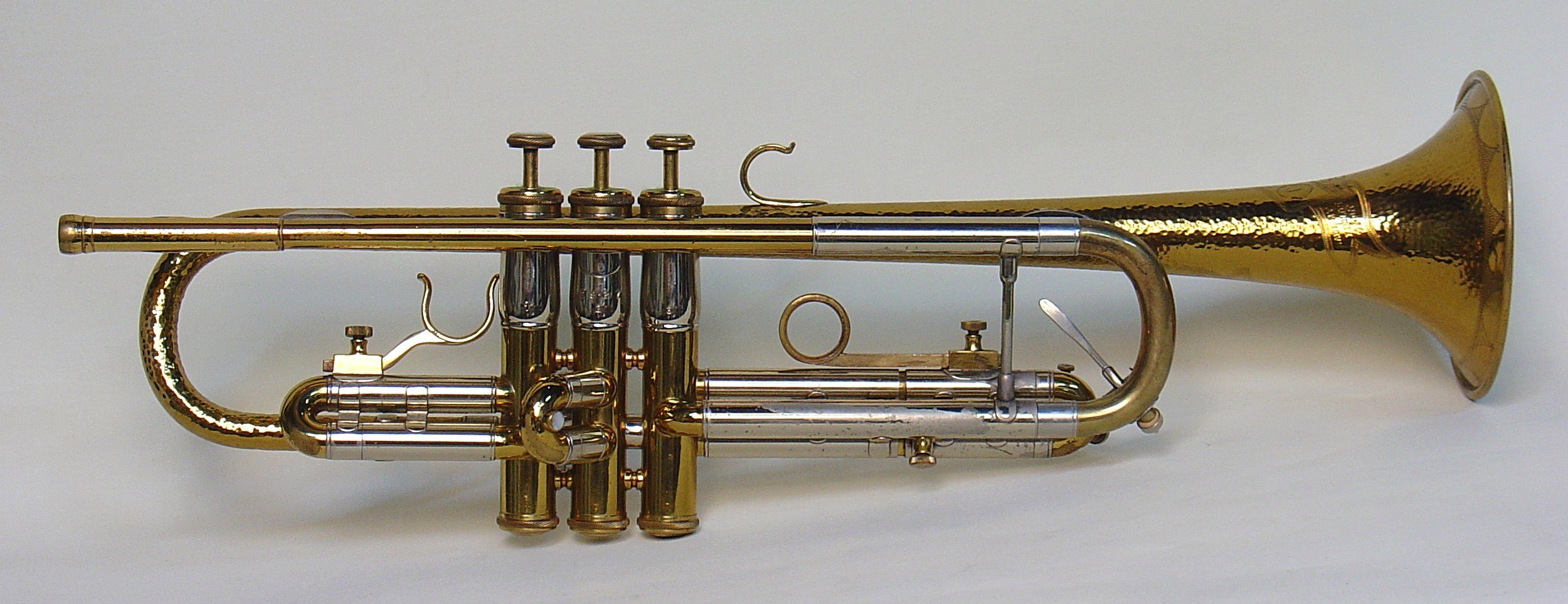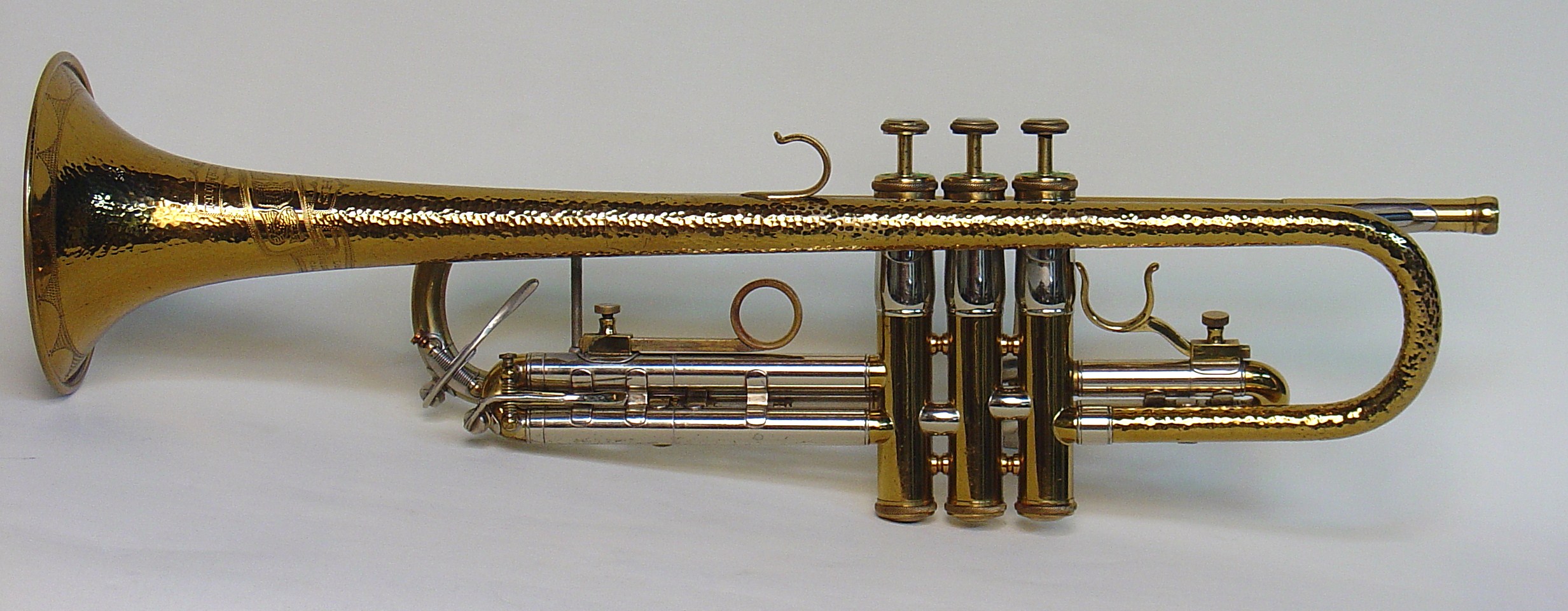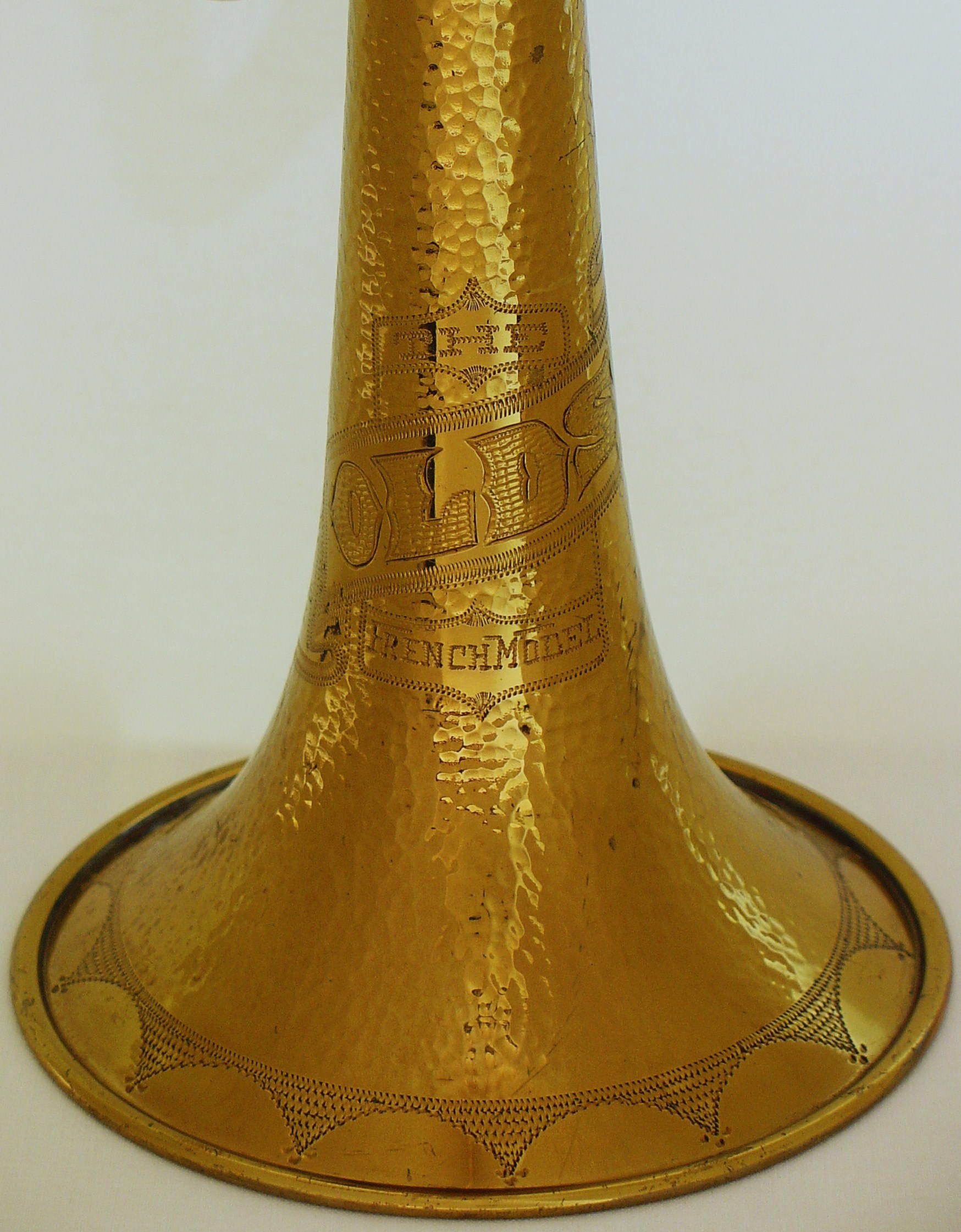Olds French Model with Custom Features
Frank Ellsworth Olds started making trombones in about 1915, with his son Reginald Birdsall joining the firm in about 1920. The two had just finished designing a new trumpet in 1928 when F.E. Olds died unexpectedly. At the time his son reported that the new trumpet design had been a life long study of his father. The company went ahead with the introduction of the trumpets and early on were offering at least two bore sizes and two different bell designs.
Within four years of their first trumpet, the hammered bell such as seen here was offered as an option. Olds introduced some new models within another two years named Symphony, Military and French Models. The early catalogues mentioned that the hammered finish bells, standard on the Military, was optional on the other two models. This is the only French model with a hammered bell known to me or entered in The Olds Register.
More Olds historical facts and literature are available at Olds Central. Most of the above information is gleaned from these websites. Newly learned serial number data indicates that this trumpet was made about 1938.
The overall length, without mouthpiece, is 19 3/4" (18 15/16" from bell rim to edge of bell curve). The bell rim diameter is 4 11/16" and the bore measures .460".
This is an extremely well preserved original instrument, showing only a small amount of wear in the original lacquer. The "French fitted" case with oxidized hardware, as described in the catalogue, is also original. You will quickly see a few anomalous features on this trumpet. The finger hook is mounted on the bell instead of the mouthpipe and the shank of first slide hook is bent so that the thumb of the left hand can reach it even as the fingers of that hand are being used to finger the valves. These two hooks have what is obviously the original lacquer, indicating that it was not modified later. In addition, the waterkey on the main tuning slide is mounted on the left side (blocking the third slide movement). The third slide ring wasn't present when I received the instrument and I don't think that the original player used that slide while playing.
On close inspection, the wear pattern on the tuning slide tubes indicates that the trumpet was held with a fingerless hand or handless arm on the right. This seems to account for all of the mechanics of the trumpet being accessible by the left hand. In later years, rather than adapting standard production trumpets such as this, Olds made a few left handed, mirror image trumpets Perhaps one of those was for this same player.




